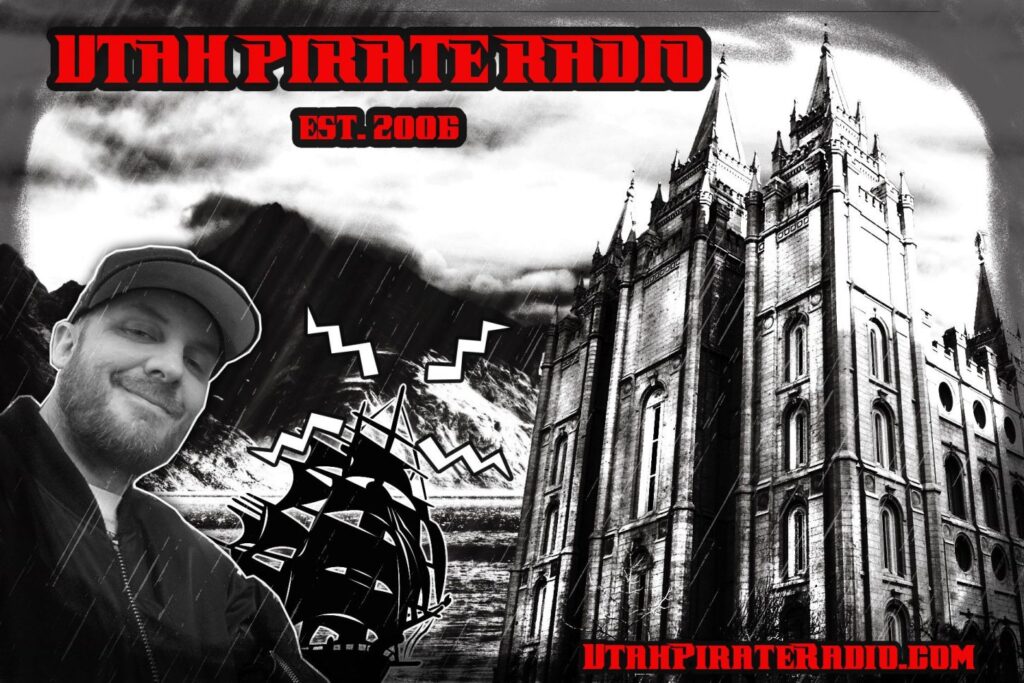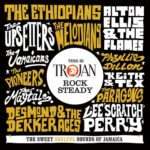What is the Duration Of Pirate Radio USA
In the United States, the term pirate radio implies the unlicensed broadcasting use of any part of the radio spectrum that is reserved for use by governmental, public or commercial licensees by the Federal Communications Commission. This includes the FM, AM and shortwave radio bands.
Compared to authoritarian systems of government which restrict access to the means of communication, the airwaves of the USA are relatively free from direct government censorship.[citation needed] As a result of this difference, the term pirate radio has a different interpretation than in countries where access to communication is limited.
In the United States, pirate radio is frequently, but not always, associated with anarchism, which considers governmental spectrum regulatory schemes as favoring the interests of large corporations, due to reasons such as high licensing costs. Therefore, some anarchists consider pirate radio transmissions to be a challenge to that authority.
Pirate radio is also in large part the resulting backlash from Federal Communications Commission‘s Title 47 CFR Part 15, which prohibits certain power broadcasting. NPR and the NAB convinced the FCC to eliminate the class D license in 1979. This kept all new low-power stations from getting a license, and bumped all of the old ones down to secondary status, forcing many more off the air since then. Despite this, an explosion of broadcast translators on FM, technically identical but rebroadcasting other stations, most part of religious broadcasting networks, has occurred since then. This further fueled pirate operators in the 1980s and 1990s.
In 1982, an organization of pirate radio monitoring enthusiasts was formed by Darren Leno. Known as the Association of Clandestine Radio Enthusiasts (ACE) the organization was and remains a very popular conduit for sharing information about North American pirate radio and other unusual radio transmissions.
Another such group, calling itself “The RPMRADIO Network” launched a series of projects aimed directly at the corporate radio media in central Texas. Responding to FCC raids of several pirate FM stations in the San Antonio-Austin area, RPMRADIO started by gathering grass roots support, then turned on 10 pirate FM radio stations across the entire area, with the promise to replace each station raided with 10 more stations. Fueled by remarks made by Alex Jones on his radio talk show, this “Ten for One” campaign is reported to have caused the FCC to rethink its approach to the fight that was developing between Pro-Corporate radio and Anti-Corporate radio forces.
Because of this severe lack of access, numerous pirate radio operators (such as Stephen Dunifer), as well as other groups petitioned the FCC for a new LPFM service. After many years of trying, this finally was passed around 2000, although it blocked former pirate operators from holding licenses. Lobbied by the commercial radio industry, the U.S. Congress intervened and limited the new service even further, though technical tests later proved this to be baseless, and the added restrictions were lifted.
Although this should mean that pirate radio has seen a decrease, most of the licensees are churches, colleges, and state or local government transportation departments, as the FCC requires the licensee to be a non-profit organization. Pirate radio also continues because legal open spots on the FM dial have been filled in since and because of the 1979 ruling, by both full-power and translator stations.
Part 15 of the FCC rules allows the use of spectrum without a license but emissions pursuant to this rule are not practical for broadcasting due to extremely restrictive power levels which limit range (range varies depending on frequency spectrum). Part 15 is intended to allow for operation of a broad range of electrical devices that emit radio energy either as an intended element of their operation (e.g. garage door openers, FM modulators for iPod auto use) or as a by-product of their operation. Despite the limited range possible under Part 15, some small broadcast stations are operated within its parameters, while others operate claiming to be Part 15 compliant but with signals exceeding what is permitted under the rule.
Because basic radio transmission equipment is relatively easy to obtain in the US and because it is relatively easy to hide, the Federal Communications Commission (FCC), which has the authority to regulate radio communications, sometimes has difficulty in finding and prosecuting offenders who transmit without a license. Triangulation may be used, but most frequently a spectrum analyzer is driven around the affected area, with a person monitoring where the suspect signal is highest, and another one looking for any obvious signs such as an antenna or small tower (like that used for amateur radio).
Hearing pirate radio stations in North America[edit]
Finding, identifying and even corresponding with pirate radio stations is, for many radio enthusiasts, itself a hobby. Most radio listeners in North America, however, will never hear a pirate station unless they seek one out.
Pirate radio stations on FM are often found towards the bottom of the FM broadcasting band, particularly between 87.9 MHz and 91.9 MHz, which is allocated to non-commercial educational, public and religious broadcasters. On mediumwave (AM), pirate radio stations are often found between 1610 kHz and 1710 kHz with the later frequency 1710 being far the most popular. On shortwave (SW), the most common frequencies to check for pirates in North America is the 6.8 to 7 MHz (42.86 metres-44.11 metres) range, with 6.855 MHz (43.76 m), 6.875 MHz (43.64 m), 6.925 MHz (43.32 m), 6.95 MHz (43.16 m) and 6.955 MHz (43.13 m) being most commonly used, and 6.925 MHz being by far the most commonly used frequency. Some stations will use “offset” or “split” frequencies, such as 6.876 MHz, 6.923 MHz, 6.962 MHz and 6.969 MHz, either to avoid interference from other stations or as part of the “image” of their particular station. Pirates can pop up anytime, but evenings, weekends and holidays are the best time to listen. Pirates operating on shortwave from North America often use single sideband modulation as an alternative to AM.
There are a wide variety of stations. Some just play music; others, like The Crystal Ship and Radio Free Speech are political ; KIPM produces its own science-fiction programming with radio plays reminiscent of old-time radio; WHYP is the James Brownyard memorial station, playing clips from an old Pennsylvania daytime AM station of that same name. Radio One recreated the sound of 1960s top-40 radio and played oldies with an echo chamber reverb effect behind the announcer much like WABC had done. The Voice of the Sea Cucumber was known for some very strange programming, its announcer calling himself “Dear Leader.” There are also many stations that are specifically aimed to the pirate radio listening community; many are long-running gag stations such as WBNY, the Voice of the Rodent Revolution, with programming by its leader Commander Bunny, who frequently sends coded messages to operatives in the field, as well as instructions to Al Fansome to check his tire pressure. A few stations mysteriously appear once a year, such as WJFK, which is usually on the air around November 22. There are also stations that provide eclectic music programming, such as Wolverine Radio, WMPR, Liquid Radio (Simulcast of its FM broadcast), and The Crystal Ship plays classic hits outside of political programming.
Shortwave or HF pirate stations often coordinate their broadcasts to avoid interfering with each other. Pirate radio loggings are often reported on Internet forums, allowing potential listeners to know when a station is on the air.
Geographically, FM and mediumwave pirates tend to cluster in urban areas such as New York City, San Francisco, Toronto, and throughout Florida. However, pirate stations are active throughout all regions of North America. Shortwave pirates are widely dispersed throughout North America and can be heard hundreds and even thousands of miles from their location. Most shortwave pirates operate on the East Coast of the USA.
Differing somewhat from the pirate radio stereotype of “kids playing radio,” there has been a growing trend towards ethnocentric pirate radio in North America. Usually these stations broadcast in native languages such as Spanish or Haitian Creole, but sometimes English, as in the case of a widely heard mediumwave pirate with a Jewish Orthodox format.
Pirate radio in Europe can often be heard in North America with a good shortwave radio and antenna. This is considered DXing. The 6.2 to 6.3 MHz (47.62-48.38 m) range is most commonly used.
- BMIR – 94.5 FM (aka Burning Man Information Radio) is the official pirate radio station of Burning Man.[1] Broadcasting and streaming over the internet (both from Burning Man and year-round) at http://www.bmir.org[2] – BMIR broadcasts a mix of music, news, burn information, weather reports, interviews with participants and artists, and theme camp and event promos. This station has evaded the FCC for years under Part 15 however broadcasting power by far exceeds said transmission levels.[3] Much of the 2012-2016 BLM special recreation permit authorizing the for-profit Burning Man Art Festival in the Nevada Black Rock City desert depends on the pirate radio station however, the BLM is not in their jurisdiction to license radio stations. Many Burning Man regional events operate similar pirate radio stations.
- Big City 101.3 in Boston, Massachusetts, formerly broadcast hip hop and rhythmic CHR. After the FM translator for WJIB on 101.3 MHz hit the airwaves on August 4, 2017, both stations broadcast on the frequency until about August 16, 2017 when Big City shut off. The station reportedly is broadcasting at lower power on 100.3 MHz which may soon become the frequency for an FM translator; Big City also streamcasts.
- Booger Brothers Broadcasting System, Queens, New York (circa mid-1930s to 1941). Operated by musician Les Paul from an apartment house where he lived. The station, which reportedly used an amplified carrier-current system, employing the building’s electrical wiring as an antenna, broadcast at night with jam sessions by jazz musicians Paul knew and played with. Paul claimed that he was visited by Federal agents, but it was only to inform him that his broadcasts were interfering with flight control radio at nearby LaGuardia Airport. He later installed a bandwidth filter to stop the interference. Paul shut down the station after he nearly electrocuted himself by accidentally touching the transmitter’s power cable.[4]
- Hot 97 Boston 87.7 in Boston, Massachusetts, broadcasts Urban AC. An Internet radio station that is re-transmitted on 87.7.
- Touch FM 106.1 in Boston, Massachusetts, broadcast as a Community pirate radio station in Boston that also plays Reggae, Urban AC, and R&B. The station was thrown off the air by the F.C.C.
- Radio 1 Boston 98.9 in Boston, Massachusetts, broadcasts Haitian-French Caribbean Music.
- Choice FM 102.9 in Boston, Massachusetts, broadcasts Caribbean Music. Other Haitian French Pirate Stations in Boston are 88.5 Dorchester/88.5 Boston, 90.1 FM Radio Energy, and an 100.1 Dorchester.
- Haitian-language pirate stations broadcast from the Brockton, Massachusetts area on 94.9 and 96.5 FM and 89.3 from Randolph, Massachusetts. The Randolph station is still on the air 15 years after being fined $10,000. Boston just had 2 other Pirate stations shut down and equipment Seized.
- RFWS: Radio Free Western Springs broadcasts on 99.1FM on Friday Nights in Western Springs, Illinois as of October 1, 2010
- Grosse Pointe Radio 920 kHz AM operates on Saturday nights out of Grosse Pointe Michigan originally on 970 kHz, now being heard on 920 kHz, featuring mostly classical and big band music. This station claims to be operating out of fictitious Grosse Pointe Gardens dance hall and off Lakeshore Drive. Good signal outside Grosse Pointe. Heard off and on, recently heard January 7, 2012.
- KABBA 103.1 FM (circa 1994), 100 watts ERP, serving a 15-mile radius around Greeley, Colorado. “All Abba, All The Time” played a continuous stream of Abba covers, interrupted only by an announcer promoting the seemingly new station with breaks such as “We hope you are never in an accident, but if you are, we hope it’s while you are listening to KABBA.” KABBA went off the air after approximately three months in response to the pleas of listeners calling the studio and leaving messages such as “For the love of God, please make it stop!”
- FRSC: Free Radio Santa Cruz FRSC was founded by a collective including Food Not Bombs, CopWatch, and other activists. Transmitting since 1995, it has changed frequency several times and is currently at 101.3 FM. They were raided by Federal Marshals and FCC agents in 2004, but the community responded with a benefit that allowed FRSC to buy all new equipment and return to the air in less than 30 days. They stream live at www.freakradio.org.
- Pirate Cat Radio 87.9 FM San Francisco and simultaneously in Los Angeles, also has a TV station, Pirate Cat TV, on channel 13 in San Francisco. First station to use Code of Federal Regulations Title 47 Section 73.3542 to broadcast legally. The FCC since shut them down and fined them $10,000.
- FRSD: Free Radio San Diego (on-air since 2002)
- FRO 98.5 Free Radio Olympia They have been on the air since March 2001 in Olympia, Washington. The broadcast is also streamed through the Internet.
- KBLT: Los Angeles (on-air in the 1990s)
- San Francisco Liberation Radio 93.7 FM (started in 1993, ceased operation in October 2003 after raid by FCC & SFPD)
- Beat Radio 97.7 FM Minneapolis, Minnesota (1996)
- T-FM: 90.7 & 105.1 in Nashville, Tennessee. (From 1999 to 2001, a controversial and sometimes subversive program called Pirate Radio aired Friday nights from midnight to 1 AM. The live show featured music, on-air personalities, pre-recorded sketch comedy, and uncensored call-ins. The parent station, WNAZ eventually canceled it due to production staff changes and questionable content. 78 complaints were filed with the FCC during Pirate Radio’s 2-year run.)
- Pulse Radio Detroit Operated a mobile FM broadcast system out of Detroit/Dearborn, Michigan in 1996-2002 covering underground house parties and Underground dance music parties in Detroit on 90.7FM. PRD broadcast some of the parties from the basement of the 2030 building and early Detroit Techno Artists who have since become international performers.
- Lake Shore Radio operated out of St Clair Shores, Michigan and first appeared around the winter of 1997 into 1998. Transmitted on 94.3, later on 89.1. Would sign on within a minute of WPHS signing off at 89.1. Played mostly one hit wonder rock, top 40 and local garage/bar scene bands. Sometimes played bizarre sound effects for hours. Other times the station would simulcast SW pirates either live or recorded. Station would run several hours to all night. Station could be reliably heard up to 20 miles away in stereo. Signal and sound quality were of commercial standard. Disappeared in the early summer of 1998 and was never heard again. Station had a following especially with the local rock and jock crowd. Station also had a webpage for a short time, but little info was supplied on this page. Claimed to have a 300-watt commercial-grade transmitter.
- The Womb was a South Miami Beach Florida radio station in the late 1990s. Dubbed the “Creation Station”, The Womb featured DJs from each of Miami Beach’s then famous nightclubs. Broadcasting 24 hours per day, the 100-watt radio station was featured in Rolling Stone in 1997 for its concurrent web-based streaming, which was built into the Real Audio G2 player. Shut down by the FCC, The Womb continues on the internet today.
- Florida Low Power Radio Stations – constantly updated list of unlicensed (though not necessarily pirate) radio signals heard throughout Florida.
- Power Hits 103.3 FM (on-air April to November 2006) Available in the Quad Cities metropolitan area, this station had been a controversy due to the interpretation of Code of Federal Regulations Title 47 Section 73.3542 saying you can broadcast without a license during time of emergency. The regulation states that a war is considered a “time of emergency.” The station’s online stream was on its MySpace page. Most of the music played on the station fell under a CHR or Top 40 format with some occasional 1980s and 1990s hits. The station also occasionally aired commercials for a local Honda dealership and a nightclub. A rental dispute caused a change in operation (from the station founders to their landlords, as the landlords seized Power Hits’ equipment and rental space for their own to pay off back rent), which eventually led to the station going off the air.
- 103.3 Radio Limbo in Tucson, Arizona, uses a mobile transmitter to avoid detection, sometimes broadcasting at night in the valley area.
- KBFR (pirate radio) Boulder Free Radio (KBFR) 95.3FM. Highly active from 2000 to 2005 (24/7 operations); now on-air sporadically from a location near downtown Boulder and from mobile units.
- 90.5 WINO FM Napa, California. This radio station was active for a short time in 1997. It was broadcast out of a repair shop, and the signal had a radius of about 2 miles. It lasted about six months, and was shut down by the FCC after KVYN FM / KVON AM Napa filed a formal complaint because while the station operator was out of town his equipment overmodulated and drifted into their signal. The station had a huge following, and stickers proclaiming Napa as “wino country” can still be seen on cars around town in 2006.
- RPMRADIO Central Studio” in San Antonio, Texas operated on 97.7FM, broadcasting uncensored rock and roll for over five years. Using publicity stunts and public demonstrations at large music concerts to gain supporters, The RPMRADIO Network brought the first pirate radio broadcasts to an area that was considered “the Garden of Eden” of radio markets, and caused a minor revolution in the programing practices of radio broadcasters in that area. When they finally received their first notice to quit from the FCC, the station operators went underground, and continue to operate several “Low Power Pirate FM Stations” throughout the area. During this time, the local corporate media outlets, including all the TV stations, newspapers, and radio stations, maintained a total news blackout as to the existence of this group of pirate radio stations.
- Radio CPR of Washington, D.C. – Station concerned with negative impacts of welfare and immigration reform legislation in the 1990s on those communities, plays Latin, punk rock, underground hip-hop, and world music.
- LUNk Radio (Lincoln, Nebraska)
- Radio Free Canton on air since 2000
- Free Radio Folsom (CA)
- Lewis FM, broadcast a mix of predominately American and British Top 40, as well as Christian Rock to a section of Lewis, New York, which has a total population of approximately 1,200 people. Lewis FM used a Ramsey FM-30 transmitter. Operations ceased in January 2007 after seven months of broadcasting. Regular operations are set to resume in Willsboro, New York, either under an entirely different name or using “The Radio” branding.
- Wicked Radio (Edgerton and Door County simulcast on Shoutcast) one of the oldest pirate radio stations located in Edgerton, Wisconsin, which ceased FM transmission on May 13, 2009, at midnight, albeit still streaming online.
- Berkeley Liberation Radio works to facilitate ordinary non-commercial community access to the airwaves for the purpose of political discourse as well as cultural enhancement. BLR has been broadcasting on 104.1 FM since 1999 and serves Berkeley and Oakland, California. Since 2007, the broadcast has been streamed through the internet.
- 91X, WLGX-FM, La Grange, Illinois (1997–1999). Ran a continuous 24/7 operation on 90.5 FM at 250 watts from a basement in a house near downtown La Grange. The station played a mix of alternative and hip hop. Ran special formats for various holidays. Live DJs, morning show and strong community following. Ceased operations in 1999 after the operator graduated high school and went to college. Broadcast again briefly during the summer of 2000 and heard once again in June 2003 for a “91X reunion weekend” but not heard since.
- KFAR, Knoxville (Tennessee’s) First Amendment Radio. 90.9 FM. Varied formats, music, hip hop, progressive programming; a uniquely cooperative venture, with DJs contributing towards expenses to broadcast. Operated briefly as CROK (Community Radio of Knoxville) before being shut down by an FCC raid September 2004. An effort was made to operate as a network of ultra-low power transmitters with internet feed, but languished for lack of sufficient interest. Archived website, 2001
- WNRC shows up at National Radio Club conventions over Labor Day, and has operates on different an AM or FM frequencies at each convention. It also has conducted “tests” on 1580, 1610, and 1710 during the winter with sweep tones and Morse code ID.
- Radio Iowa City, successor to Iowa City‘s previous pirate FM stations.
- WoDD FM – Toms River, New Jersey, which operated from 1989 till 1992 on various frequencies, usually over existing commercial stations, such as WXRK (92.3 FM) and WPAT-FM (93.1 FM). WoDD finally settled in late 1991 on 95.3 FM, which was established as an “open channel” via its own engineering survey. Pirate Pat was the owner operator of WoDD and the station format was a range of classic rock, alternative and metal. Comedy “bits”, live phone calls, live bands and political commentary were key components of the WoDD’s weekly broadcast. Highlights included live phone calls from jails, live calls to senators, congressmen, the FCC and the White House.
- 104.7 FM / Black Disciples street gang – A commercial-free hip hop station that operated on the south side of Chicago in 2003 and 2004.[5] The station was shut down on May 13, 2004, by FBI agents and the Chicago police as part of a crackdown on the Black Disciples street gang, which was operating the station to broadcast warnings of police activity.[6]
- 90.5 FM – East Chicago, Indiana, which operated in 2006, airing uncensored gangsta rap music.[7]
- KXPX 101.5 Rock Variety Radio – A commercial-free Mesquite, Texas pirate radio station which has been operating in north Mesquite across a 7-10 mile radius on and off since mid 2009. Most of the music played is often 2000s active rock, alternative, metal, indie, pop and rarely rap scattered in one playlist. They normally play music back to back sometimes with the station ID but, occasionally the station will occupy a DJ usually on the weekends. The station is also known for having on air glitches from time to time. The station sometimes moves frequencies to 99.9 or 92.9 but, is almost always on 101.5.
- 2000 Flushes Pirate Radio, broadcasting from the Twin Cities[where?] in the early 1990s. Its name was inspired by a brand of in-tank toilet-bowl cleaner as was widely advertised at the time.
- The Station 92.1 FM operated out of a garage in San Luis Obispo, California. It aired its first broadcast on October 10, 2003, and featured more than 40 DJs playing 60+ hours of live programming a week, with computer-programmed music between shows. Content ranged from local talk shows, news, live bands, hip-hop groups, and a wide mix of underground and alternative music. The Station’s transmitter was based on a kit from Free Radio Berkeley. Starting out at 25 watts and later getting boosted to 300 watts, it was the most powerful pirate radio station on the West Coast. The Station was shut down by the FCC on Aug. 21, 2004.
- WJDI 1620, broadcasting from Kingston, New York since January 1, 1989. This was one of the more successful pirate stations during the 1980s. It remained on until final close-down on Christmas 1996. During its test broadcast, the announcer says they are “broadcasting with 1,000 clear watts”.
- Free Radio Prison City “FIXX 96” 95.9 FM, was a 20-watt station that broadcast in Jackson, Michigan between 1996 – 2001 playing hard rock and alternative rock music mixed with such outrageous antics as live on-air parties and spontaneous pranks. The station was quite popular with inmates at the nearby State Prison of Southern Michigan, and fan mail from inmates was read on the air regularly. “FIXX 96” went off the air in an unsuccessful attempt to receive a license to legally use that frequency. Periodically, the station will hold reunion broadcasts, normally on Halloween weekends.
- WEDG – Animosity Radio 88.9 FM – Silver Springs, Florida- Mostly underground musical content with a couple of talk shows. This station is always online and on the air and always accepts new dj’s. www.animosityradio.com is the website.
- WRFN – AM 1580, Niles Illinois, Identified itself as “Radio Suburbia”, “The radio station with sex appeal” was on the air from 9 to midnight on Friday nights in 1968. Using 45 watts, WRFN DJ Al Vincent spun the latest pop & rock as well as oldies-but-goodies. WRFN was shut down by the FCC on March 22, 1968 during a broadcast. Articles about this station appeared in the Chicago Tribune (“Radio Station Way Out FCC Closes It”); Broadcasting magazine April 8, 1968, pg.67 (“Chicago’s Caroline silenced by FCC fuzz”) and in “Valley Voices: A Radio History” pg.448 by John Russell Ghrist.
- The Big-Q 1710 AM, Location unknown, mostly heard in the central & upper midwest states. High quality AM broadcast with most shows centered around a late 60s early 70s top 40 AM station theme. Also broadcast old 1940s radio shows and commercials. Heard mostly on weekend early mornings around 0600 UTC.
- WLE (We Love Englewood) 1966-1969 one of the early pirates in Chicago operated by African American high school students in the Englewood neighborhood on AM at 950 following sign off of WAAF WGRT later at 1030 AM. operated at 280 watts.Would rebrodcast University of Chicago station WHPK as well as NBC news from WMAQ. Was used during the Chicago Riots of 1968 to call for calm on the streets of Englewood. Was closed down by FCC inspection. Operator said to be teenager, Larry Langford now licensee of WGTO in Cassopolis Michigan.
- WOOF (Woofin’ Out Of The Fryin’ Dog Pound) – Pirate radio station in the Shortwave band that broadcast a mix of New Wave, Heavy Metal, and Acapella music from an abandoned survey vessel in New York. Now a licensed radio station.
- KRNI Radio Normandy International 105.3 MHz, Guerilla Pirate Station from Japan now moved and broadcasting in Mohave County Arizona and also known to be in Orange County, California as well though limited reception there due to full FM Band.
- WHAR 92.9 FM “Free Radio for the Free Thinker” is a pirate radio station that plays a mixture of rock, pop, indie, experimental and classics using a collection of turntables and PCs. They utilize winamp and stereo tool for audio processing. Presenters are “A-Train” and from 2013-2014 carried a show called “The Man With The Tin-Foil Hat”, although, on most occasions, UK pirate Echo One will also present through use of the skype network service. Operates from 2012 until the present day with reception of up to 5 miles with good conditions – however it is also sometimes relayed by other FM and shortwave pirate stations.[8]
- KSOUR, Sherman Oaks Underground Radio, San Fernando Valley, CA ~830 kHz, ~100W. Operated by students of Grant H.S. between Oct. 31, 1970 until November 17, 1973 at 9:44 pm when shut down by the FCC. KSOUR was very popular and is said to have shown up in Arbitron ratings just prior to the FCC bust. The six regular hosts were diverse and offered top 40, country and oldies, progressive rock, a talk show and old time radio shows. At its peak, the station operated on Saturdays from 1 pm to 2 am. KSOUR was located in a multi-building apartment complex, which permitted erection of a clandestine half wave dipole just feet above roof level. KSOUR later morphed into Radio X in 1979, and was later shut down while operating on FM with 1W from inside the Edwards Air Force Base Public Viewing Area the night before a space shuttle landing.
- WCPR, WFAT, WHOT, WGUT, New York City, operated by Hank Hayes and Jim Nazium in Brooklyn, 1975-1989.[9]
- Radio Clube Ajoudizas 89.3 Billerica, Massachusetts – Plays Portuguese music for Portuguese Americans (despite the Greater Boston having the largest Portuguese community in the United States).
- KHOP, Topeka, KS; July 7, 1976 to October 13, 1977; 35 watts home built tube transmitter; AM 1440 kHz; owner Jonathan Hopkins; closed due to move out of state.
- KLJY, Palmer, AK; Broadcasting on 98.5 FM with a signal radius of 5–9 miles in the Mat-Su Valley area of Alaska. Signal is the strongest in the downtown Palmer area. Broadcasting a variety of musical genres and eras, programming is completely freeform. Transmission schedule is not regular, but mainly heard on weekdays. Going by the name of “Killjoy Radio,” the station is loosely inspired by the 2010 My Chemical Romance album, “Danger Days: The True Lives of The Fabulous Killjoys,” in which the concept of the record is that it is presented as a pirate broadcast from the year 2019.










No Comments